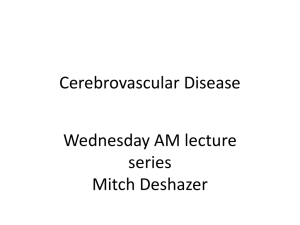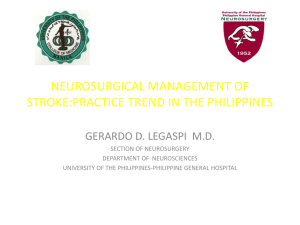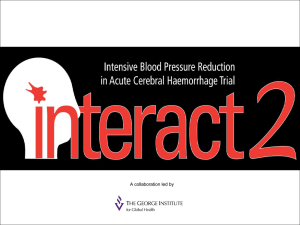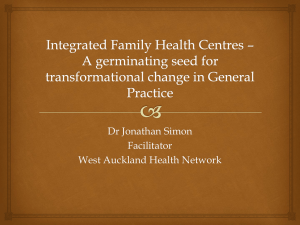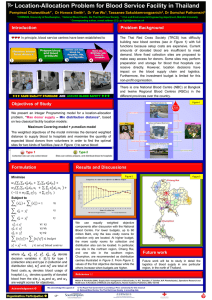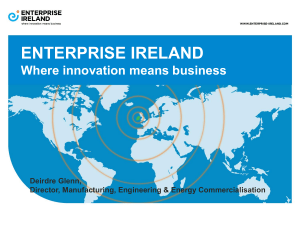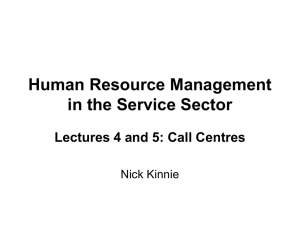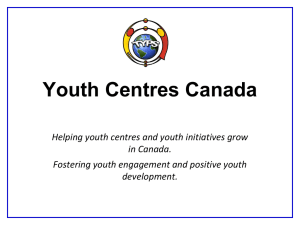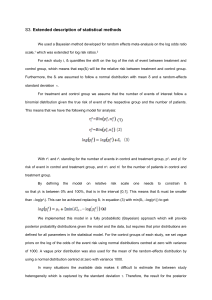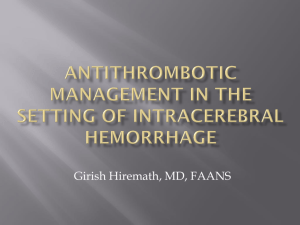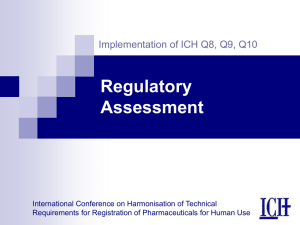INTERACT2 Protocol Presentation
advertisement
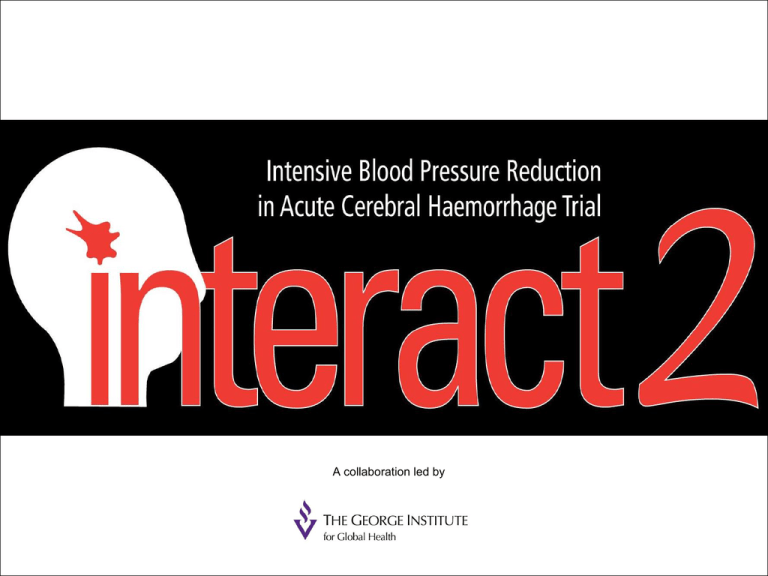
A collaboration led by INTERACT2: Protocol INTERACT2: New design features Reduced number of in-hospital assessments but includes and assessment of ICU stay and use of renal dialysis Repeat 24 hr CT scan to be collected only in 600 patients (300 Chinese and 300 non-Chinese) Option of telephone-based outcome assessments at 28 and 90 days Screening logs kept for only 1 month of the year sites to be notified of the randomly selected month in advance. Use of an Interactive Voice Randomisation System (IVRS) in China INTERACT2 BP Management Evaluation of a management policy and NOT of a single agent Inclusion of BP lowering management protocols for key available agents Pragmatic approach to treatment Agents readily available in hospitals Agents approved for clinical use Lower study costs Study Outline Acute spontaneous ICH onset <6 hours SBP ≥150 and ≤220 mmHg No definite indications or contraindications to treatment Able to be actively managed Provide informed consent R Standard best practice stroke unit care Intensive BP lowering Conservative BP management Target systolic BP 140 mmHg within 1 hour and for 24+ hrs AHA Guideline-based (treatment if systolic BP >180 mmHg) Repeat CT scans 24 hrs in selected patients Vital signs and BP over 7 days 28 day and 3 month follow-up Sample Size 2800 patients from 140+ sites 90% power for: 14% RRR in death/dependency in active vs control 20% RRR in (50%) randomised <4 hours Network UK 27 centres Europe Austria, Finland, France, Germany, Portugal, Spain, Switzerland, The Netherlands, Italy, Poland USA (Rochester) 1 centre Chile 6 centres China 49 centres 64 centres Brazil 9 centres Argentina 6 centres India /Pakistan 13 centres Australia 14 centres Inclusion Criteria Age 18 years or above Acute spontaneous ICH (history and CT) At least two systolic BP 150-220 mmHg, recorded ≥2 min apart Able to be randomly assigned BP lowering therapy within 6 hours of stroke onset Able to receive active (‘intensive’) care in a monitored facility Exclusion Criteria Known definite contraindication to intensive BP lowering Known definite indication to intensive BP lowering ICH secondary to a structural abnormality Ischemic stroke in last 30 days High likelihood of death within 24 hours (GCS 3-5) Exclusion Criteria (cont.) Known advanced dementia or significant pre-stroke disability Concomitant medical illness Planned early surgical intervention Participation in other trial Unlikely to adhere to treatment or follow-up Eligibility To be eligible for INTERACT2: All inclusion criteria questions must be answered “YES” All exclusion criteria questions must be answered as “NO” Randomisation system Randomised to either Intensive BP lowering treatment Control; current guideline based management of BP Patients are stratified according to: time since stroke onset (0-4 vs. 4-6 hours), site and country of recruitment Schedule of Assessments Evaluation Prior to Randomisation Eligibility X CT scan X Fevers to be recorded X BP/Heart rate X BP x 2 Consent (a) X Clinical history prior medications X Physical exam GCS/NIHSS X Day 1 7(b) X X X X Only first 600 patients X X 15min during 1st hr hourly for 2-6hr 6 hourly for 6-24hr X X X HRQoL assessment with EQ 5D X 90(c) X Functional assessment with mRS Standard care & routine blood tests 28(c) X BP lowering treatment X X X X Standard stroke care X X X X Hospitalised or not X X X X Contact details for Follow-Up X X Outcomes Primary – composite of death or dependency (ie score 3–5 on the modified Rankin Scale [mRS]) at 90 days Secondary: Key – primary endpoint in patients <4 hrs of ICH onset Others Death Dependency; Disability on the mRS HRQoL (using the EuroQoL and health utility score EQ5D) Recurrent stroke after 24 hrs of initial ICH Other major CV events (myocardial infarction or sudden death) Need for permanent residential care Duration of initial hospitalisation. Summary INTERACT2 has been designed to provide a definitive answer to the management of elevated BP in patients with acute ICH If successful, thousands of patients could benefit, with associated major health gains Acknowledgements Patients and families Participating hospitals and staff Many project staff in multiple countries Funding: National Health and Medical Research Council of Australia The George Institute for Global Health Acknowledgements Executive committee: Craig Anderson (Principal Investigator), John Chalmers (Chair), Hisatomi Arima, Stephen Davis, Emma Heeley, Yining Huang, Richard Lindley, Bruce Neal, Mark Parsons, Christian Stapf, Christophe Tzourio and Jiguang Wang. China steering committee: Yining Huang, Jiguang Wang, Liying Cui, Shengdi Chen, Zhenguo Liu, Chuanzhen Lu, Qidong Yang, En Xu, Jingfen Zhang, Chaodong Zhang, Shizheng Wu and Xining Yan Chen European advisory board: Austria – Ronny Beer, Erich Schmutzhard; Belgium – Patricia Redondo; Finland – Markku Kaste, Lauri Soinne, Turgut Tatlisumak; France – Christian Stapf, Christophe Tzourio, Eric Vicaut; Germany – Katja Wartenberg; Italy – Stefano Ricci; Netherlands – Karin Klijn; Portugal – Jose´ Ferro; Spain – Angel Chamorro; Switzerland – Marcel Arnold, Urs Fischer; UK – Tom Robinson. Operations committee: Emma Heeley, Candice Delcourt. International coordinators: Michelle Leroux, Tara Sasse, Jun Hata, Gouyjen, Tina Cheung, Cathy Boreham, Sarah Leighton. Regional coordinators: Americas – Alejandro Rabinstein; Argentina – Conrado J. Estol, Mariana Zimmermann; Brazil – Gisele Silva, Joyce Marinho; Chile – Pablo Lavados; China – Jian Sun, Nan Li, Zhao Yan, Chen Xiaoying; France – Sofiane Kabla, Cecile Dert; India –K Mallickarjuna, Najam Hassan, Jeyaraj Pandian. DSMB members: John Simes (Chair), Marie-Germaine Bousser, Graeme Hankey, Konrad Jamrozik (deceased in 2010), Claiborne Johnston and Li Shunwei. Statisticians: Laurent Billot, Stephane Heritier and Qiang Li.
